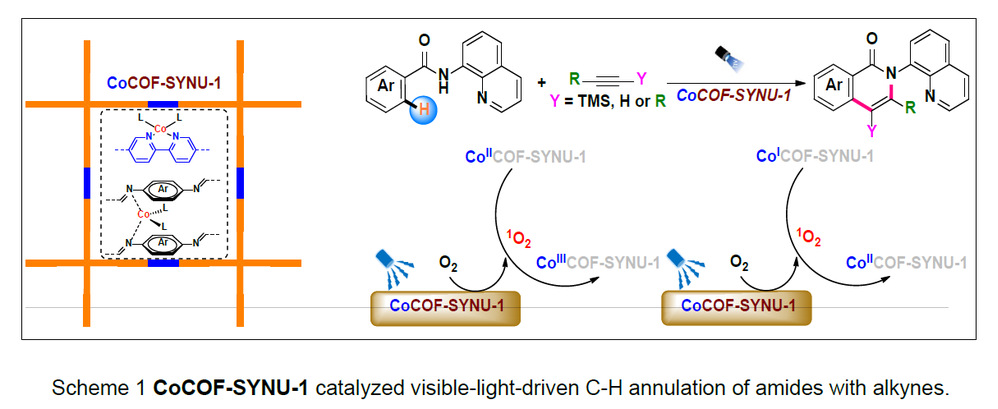
Recently, the renowned academic journal Journal of Materials Chemistry A published online the latest research findings of Xiaobo Yang's group at our institution in metal-covalent organic framework synthesis and their catalytic applications in organic synthesis. The research article titled A cobalt covalent organic framework: a dual functional atomic-level catalyst for visible-light-driven C-H annulation of amides with alkynes.
In this study, the cobalt covalent organic framework exhibited dual catalytic activity as a single catalyst, effectively replacing transition metal catalysts and visible-light photocatalysts. This work first applied a cobalt covalent organic framework in the selective C-H annulation reaction under visible-light irradiation. This breakthrough provides a novel approach for utilizing photo responsive covalent organic frameworks in visible-light-induced organic reactions. Additionally, the research successfully addressed the challenge of recycling transition metal catalysts and photosensitizers, broadening the application range of covalent organic frameworks in visible-light-induced transformations of small organic molecules (Scheme 1).

Shenyang Normal University is recognized as the first and corresponding author's affiliation for this work. Jingwen Jia, a master's research student from the School of Chemistry and Chemical Engineering, served as the paper's first author, while Professor Xiaobo Yang acted as the corresponding author. Financial support for this research was provided by the Natural Science Foundation of Liaoning Province (Project Nos. 2021-MS-240, 2019-ZD-0476, 202010012), the Fundamental Research Project of Higher Education in Liaoning Province (LJKQZ2021052), and the Major Incubation Project of Shenyang Normal University (ZD201903).
Original article link: https://doi.org/10.1039/d2ta01325h